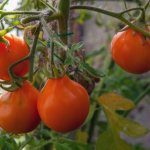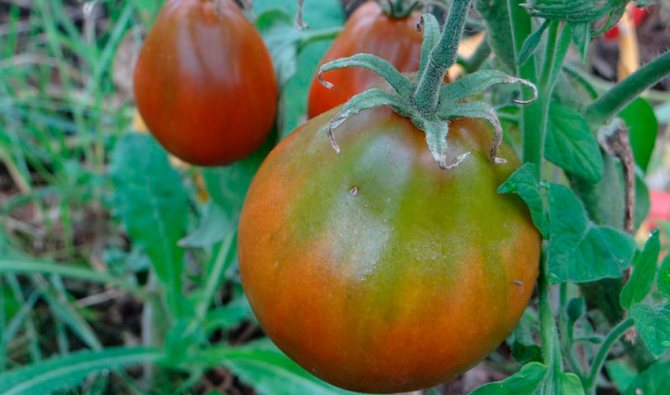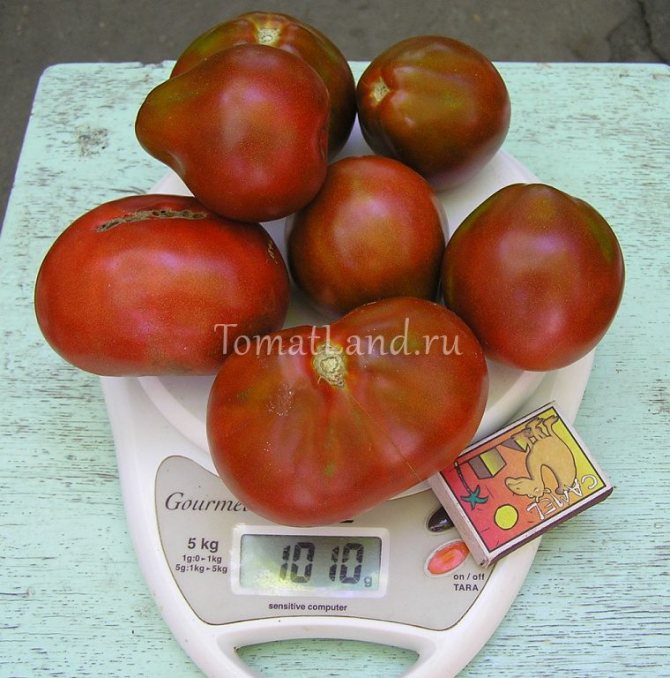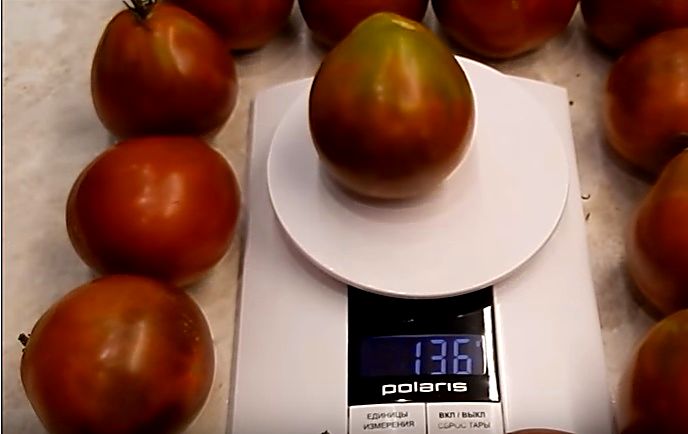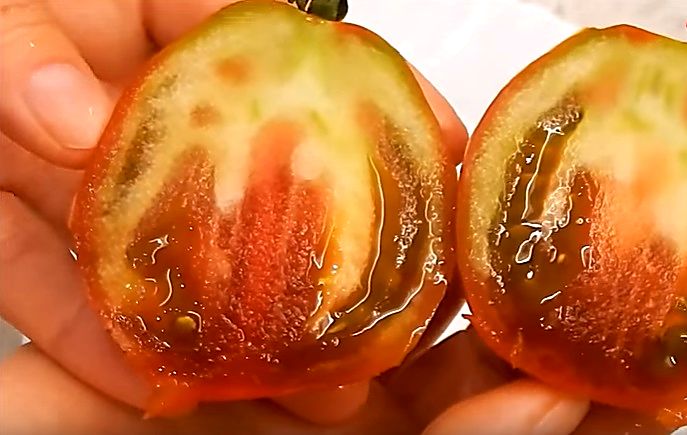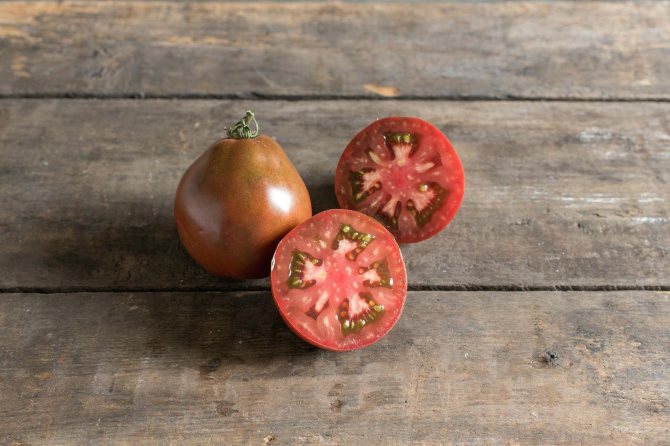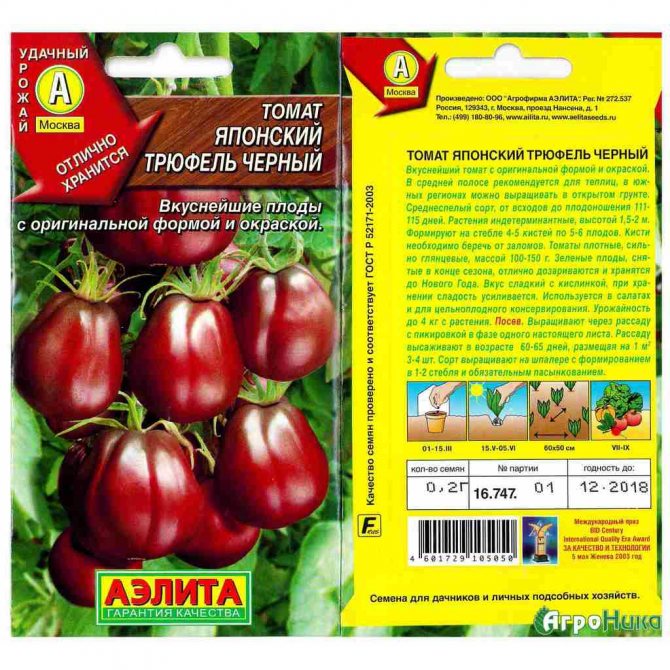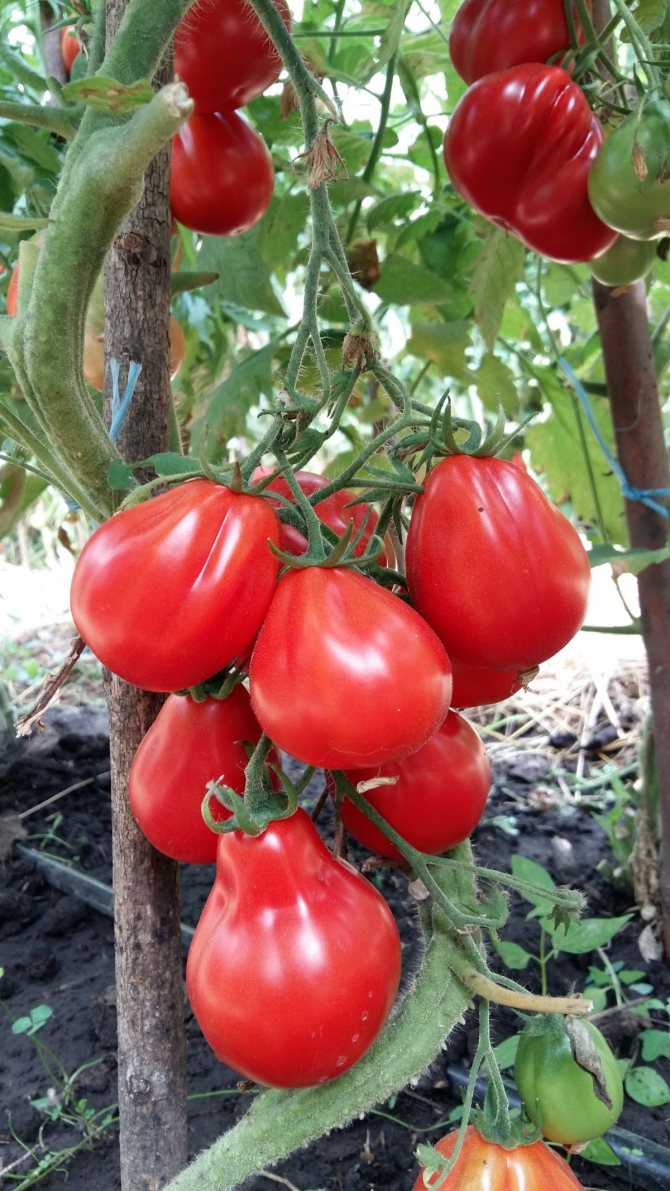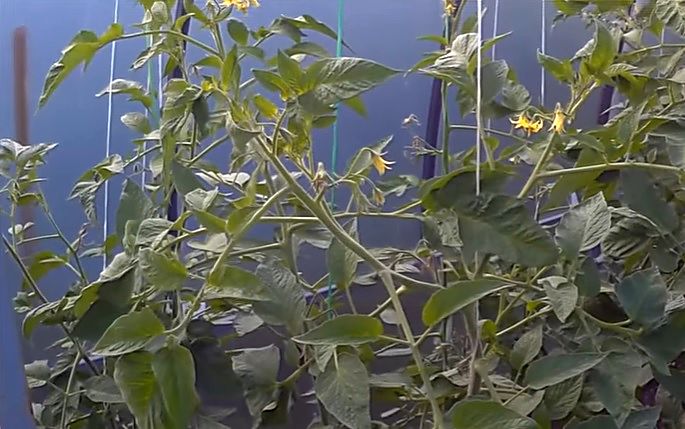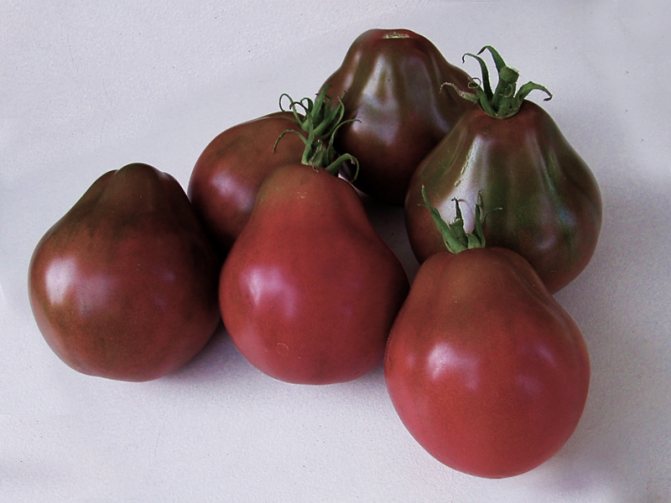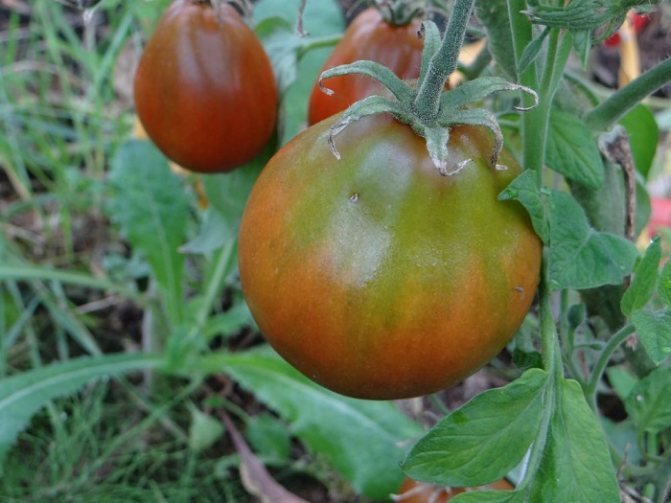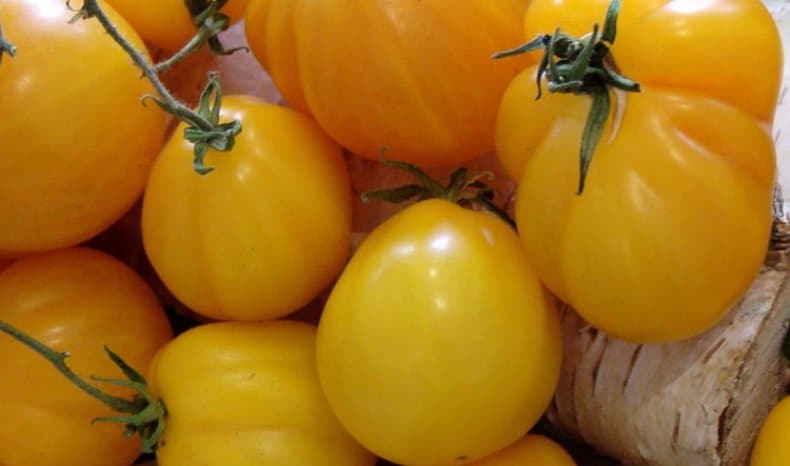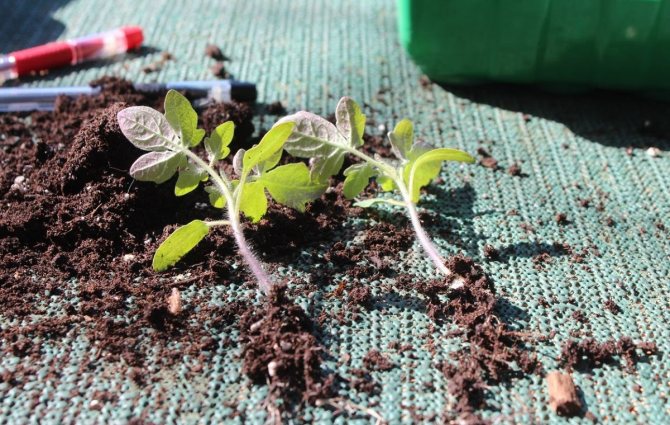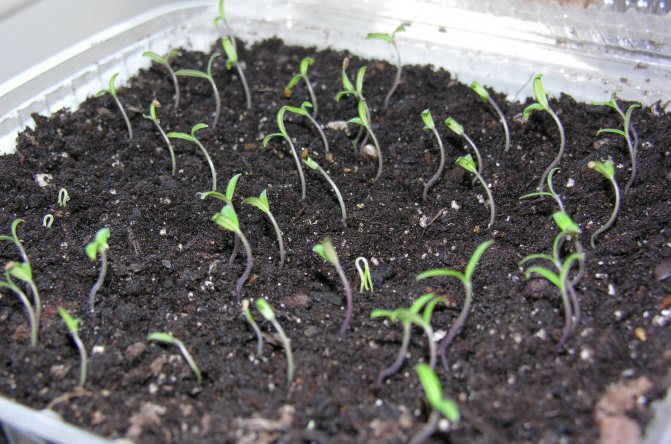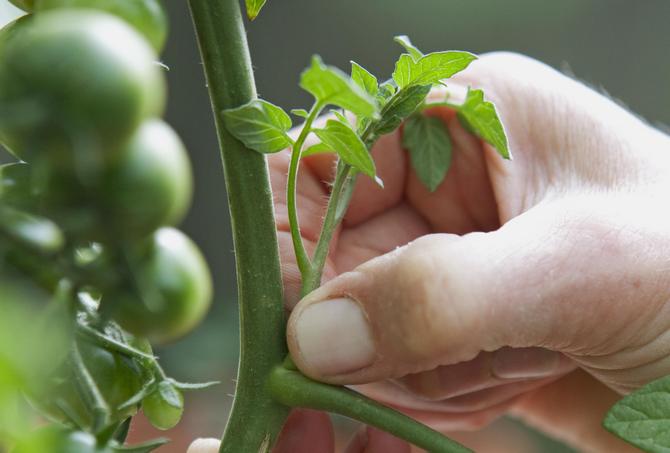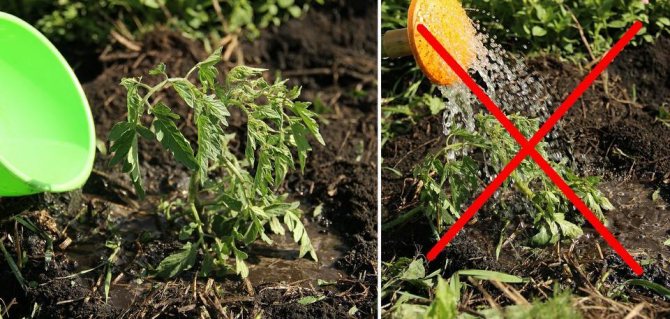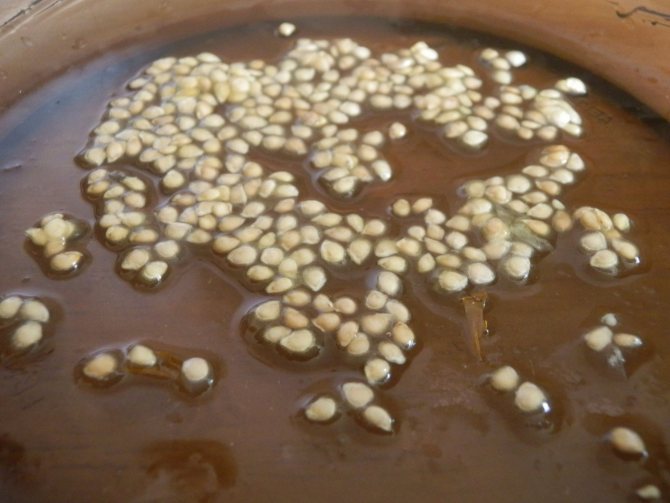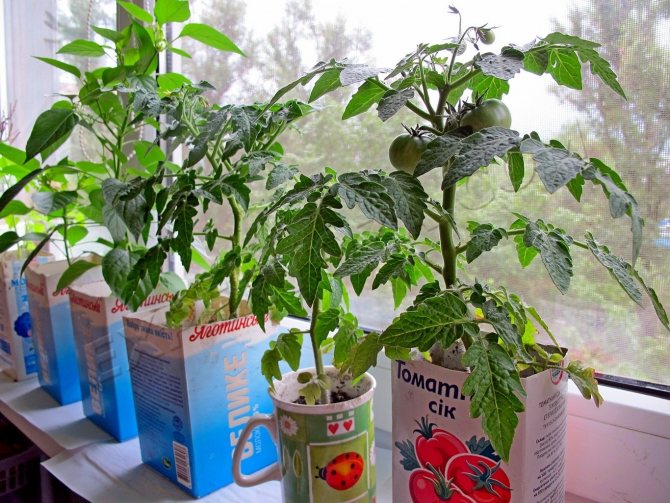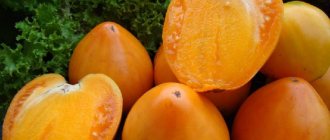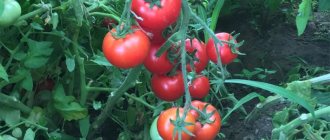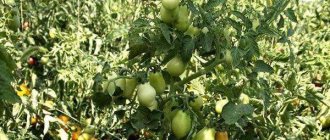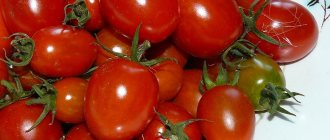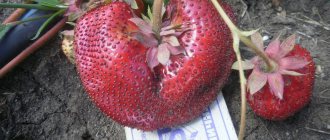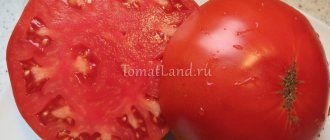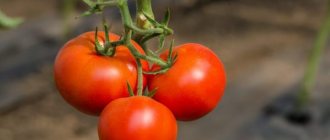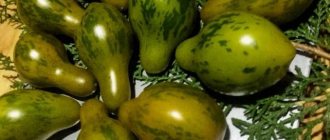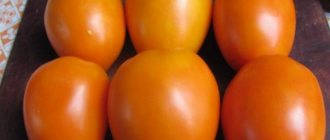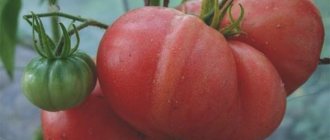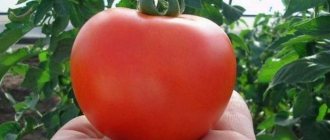»Vegetable growing» Tomatoes »Growing tomatoes Japanese truffle
0
250
Article rating
Over the past decade, the young tomato Japanese truffle has gained public acceptance. The creator of this variety is the Russian breeding institute, which entered the variety into the State Register in the early 2000s.
Growing Tomato Japanese Truffle
Characteristics and description of the variety
Tomato seeds Red Truffle are offered by many well-known seed-growing organizations in Russia, such as Biotekhnika, Sibirskiy Sad and others. This variety is one of the varieties of the Japanese Truffle tomato variety. On sale you can find tomato truffles with different fruit colors: red, pink, yellow, orange, black. They all have the same characteristics of bushes and fruits, with the exception of the color of the tomatoes themselves.
Did you know? Tomatoes come in different shapes, depending on the variety. Tomatoes are: flat-rounded, spherical, pear-shaped, drop-shaped, elongated in the form of icicles, pepper-shaped.
Characteristics of the Truffle red variety:
- the variety is mid-season, the first fruits appear in 115–120 days;
- the height of the bushes varies from 1.70 to 2.0 m, depending on the growing conditions (in the greenhouse, the plants are higher);
- 5–6 fruits in the cluster, the fruit cluster is simple;
- on the stems, the brushes are located through 2 leaves;
- fruits are red, pear-shaped or nodular with pronounced ribbing;
- medium-sized tomatoes, fruit weight 90–170 g;
- the main purpose of the variety is conservation and salting;
- the average yield of the variety is 4 kg per plant, with full care the potential yield is 8-10 kg.
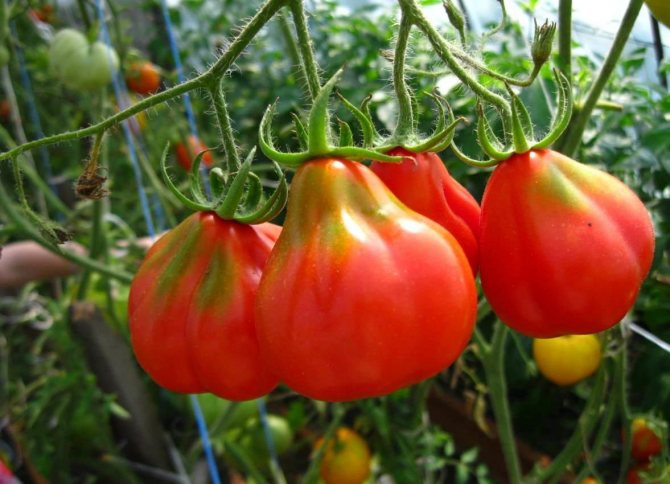
Gardeners reviews
Rodebielesumer
We tried it for the first year, we liked everything. The yield is small, up to 1.5 kg per bush, but the taste is excellent, there is more sweetness than sourness, even after ripening, the fruits remain dense and tasty.
Uncle
The taste of the Japanese truffle is stable regardless of the season. He does not get bored.
Pros and cons of the variety
Like any tomato variety, Truffle red tomatoes have both undeniable advantages in the eyes of the consumer and some disadvantages.
- Pros:
- fleshy, non-watery fruits with good taste;
- fruit brushes fit perfectly;
- convenient size, uniformity of fruits - important properties for winter harvesting;
- unpretentious cultivation;
- dense structure of tomatoes, facilitating long-distance transportation;
- ability for long-term storage;
- good productivity;
- tolerance for long-term decrease in air temperature;
- resistance to some diseases and pests.
Did you know? The color of tomato fruits depends on the cultivated variety. They can be: red, pink, white, yellow, orange, green, black, brown and even striped.
- Minuses:
- long-lasting green spot at the peduncle;
- the need for regular pinching and bush formation;
- the requirement for systematic tying of branches during the summer;
- medium-sized fruits.
Varieties of tomato
There are five main types of tomato Japanese truffle: red, black, orange, gold and pink. Each variety has its own advantages and disadvantages.
Red
The red variety of tomato is the most popular among its analogues and is distributed. Differs in deep saturated color and small size (from three to five centimeters).
Recommended for pickling, preparing various dishes, and also for use in salads.
The black
Black Japanese truffle is recognized as an immunity-enhancing variety. Also a distinctive feature is the maximum fresh storage period.
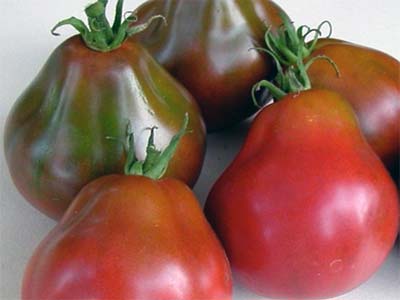

Yellow
Golden Japanese Truffle is famous for its bright sweet taste and is often used as a dessert or to complement baked dishes.
Orange
Orange fruits are slightly larger than other varieties and reach, on average, 150-250 grams. It is recommended to pluck this variety in an immature state and leave it warm for two or three days. Thus, the concentration of useful and gustatory indicators increases.
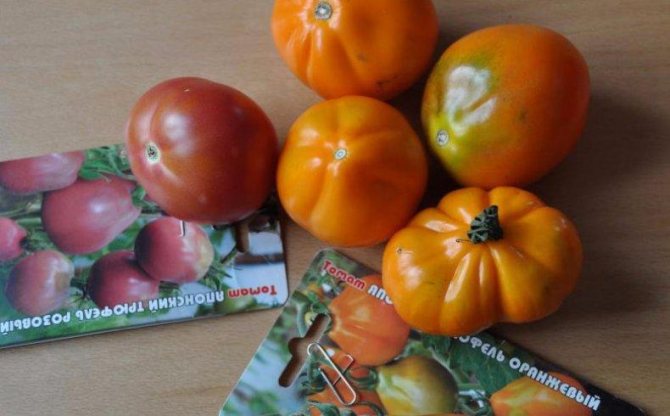

Pink
The pink variety of fruits is not so popular and is used more often in cooking than in canning. Yield indicators are slightly lower than those of analogues. The taste has almost no sourness, but the sweetness is not as bright as that of the black variety. The raw shelf life is also short.
Features of growing tomato varieties
Since this variety is tall, it must be grown through seedlings. The need is explained by the fact that in our climate the Red Truffle sown with seeds in the ground cannot reveal its full potential - it simply does not have enough time before the onset of cold weather.
Microclimate
The temperature in the room where tomato seedlings are grown should not fall below + 18 ° C and rise above + 22 ° C. This is due to the fact that at low temperatures, plantings fall ill with fungal diseases, and at high temperatures, the aboveground mass develops rapidly, to the detriment of the root system.
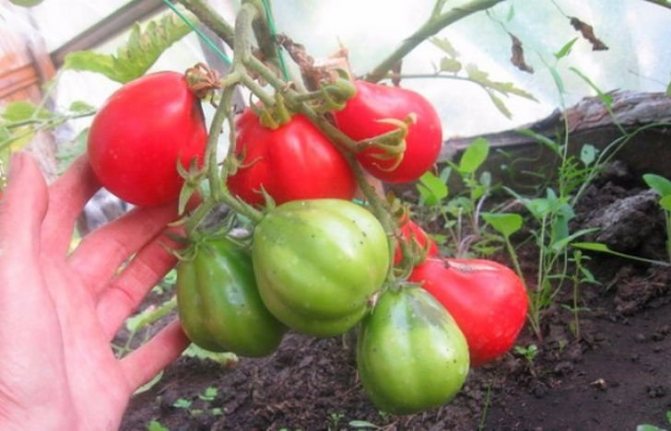

Seedlings grown at high temperatures have a thin, elongated stem and a pale, light green color. When planted in the ground, such plants begin to hurt for a long time during adaptation, which significantly delays fruiting and reduces the overall yield.
High humidity in the nursery is also unacceptable, since it also provokes the development of fungal diseases. To reduce air humidity, the room is regularly ventilated, at least twice a day. Young plants need good lighting; for this, the pots are placed closer to the light source (on the windowsill). If this is not enough, artificial illumination of crops is additionally used.
Pay attention to such tall varieties of tomatoes as:
Seed sowing technology
Seeds are sown approximately 2–2.5 months before the expected date of planting in the ground. For example, if the landing will take place in mid-May, then the sowing is carried out around March 1.
Sowing soil
The soil for growing seedlings can be purchased in garden stores or mixed independently, and this work must be done in advance, in the fall. A good soil for growing seedlings is obtained from equal parts of leafy soil, humus and peat crumb. A few handfuls of sifted wood ash and coarse river sand are added to this soil mixture.
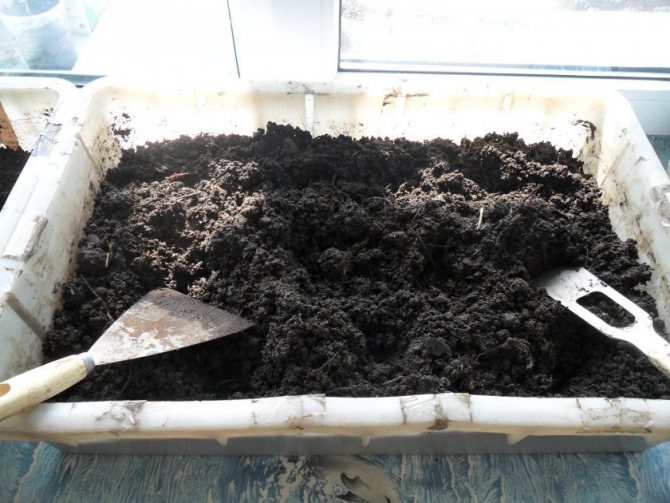

Soil disinfection
Since most viruses, pathogens of fungal and bacterial diseases, as well as harmful insects hibernate in the soil, it is recommended to sterilize the soil before starting sowing work.
Soil sterilization can be done in several ways:
- In the oven. Spread the soil over a baking sheet in a layer not exceeding 10 cm and place in the oven. Warm up at a temperature of + 250 ° C for 30 minutes. After the soil has cooled to room temperature, it is placed in pots and used to plant tomato seeds.
- Freezing. In winter (December-January), the soil is poured into planting containers or boxes and put out on the street or on the balcony for freezing at temperatures below 0 ° C for a week or two. The same procedure can be done in the freezer, but for one or two small planting pots.
- Watering with boiling water. The pots of soil are placed in the bathroom, after which they are abundantly watered with freshly boiled water. The bath is needed as a pan for draining excess liquid. After the soil temperature is equal to room temperature, sowing work can be carried out.
- Watering with manganese solution... A pale pink solution of water and potassium permanganate is made (for 1 liter of water 1 g of manganese), it is plentifully watered the soil in pots. The disinfectant solution neutralizes bacteria and pathogens in the soil.
Growing and care
It is recommended to plant seedlings in mid-spring, when severe frosts are over. Seedlings germinate indoors for a month and a half, after which they can be transplanted into the ground. Most often, this procedure is carried out at the end of May.
Tomatoes must be formed into several stems, and only 3-4 brushes should be left on one plant. If there are more of them, then some fruits will not be able to develop well. To increase yields, it is recommended to plant seedlings in a greenhouse, since the bushes grow taller and stronger in it.
All plants are periodically tied up so that the stem does not break under the influence of heavy fruits. For greater reliability, you need to tie and brushes.
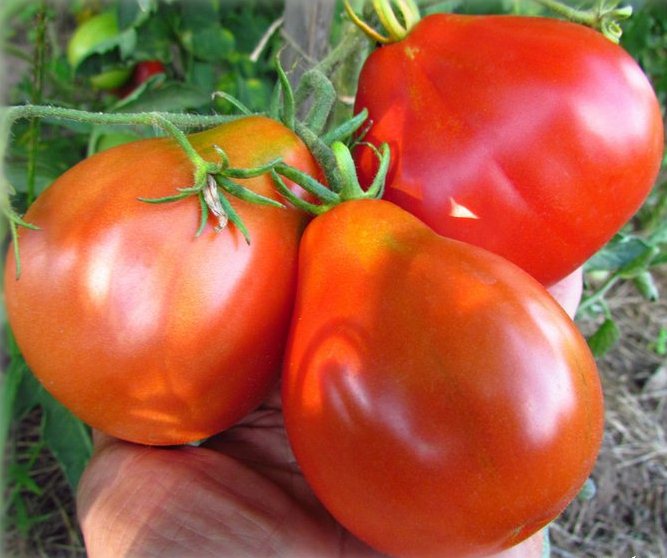

Tomatoes should be watered periodically. It is advisable to do this in the evening. During irrigation, only well-settled and warm water is used. It is impossible to water the bushes with cold liquid, as this can harm them.
Features of caring for tomatoes
During the growing season, tomatoes require care, which consists of weeding, hilling, pinching, garter, watering and protection from diseases and harmful insects.
Top dressing and watering
Tomatoes need to be watered every week, and in a particularly hot season, water them more often: every 3 days. Watering in the evenings, after 6 pm, at this time the heat of the day subsides and the air temperature drops significantly. Plants are irrigated only at the root, tomatoes do not like sprinkling on the leaf, since this provokes an outbreak of fungal diseases.
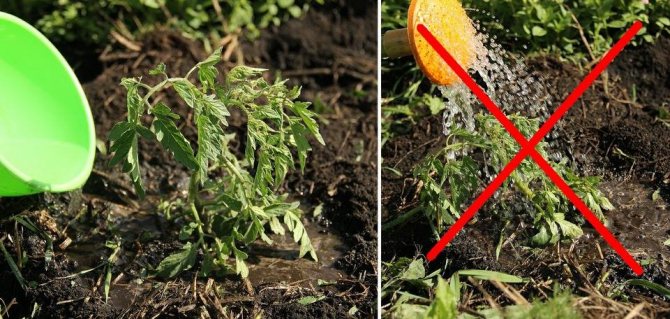

You can irrigate tomatoes using root watering, or you can equip a tomato bed with a drip irrigation system. In the middle of the growing season, during fruit setting, tomatoes can be fed with potash fertilizers. In no case at this time should you give tomato bushes a fertilizing containing nitrogen, which causes the rapid growth of leaves and stems.
Grasshopping and bush formation
The tomato variety Red Truffle has a tendency to strong branching, that is, the formation of stepchildren, therefore it needs regular formation of a bush. There are various ways of forming, but for the climate of our country, the most suitable is the formation of two or three stems.
The formation and removal of stepchildren begins after the bushes planted in open ground adapt and start growing. The plant, ready for pinching, is at least 80 cm in height, well-developed lateral branches and stepsons in their axils. Grassing is carried out using ordinary clerical scissors or a garden pruner.
Important! Experienced gardeners do not recommend, while pinching, completely break the stepsons out of the leaf axils, since after a while they will begin to grow again. To completely stop the growth of the stepson, you need to cut it off so that a stump 1 cm long remains in the bosom of the leaf.
How to correctly pinch:
- It is necessary to determine where the main stem of the plant is, then cut out all the stepchildren growing from the soil. The harvest on these stepchildren will ripen for a very long time, delaying and reducing the main yield of the bush.
- When forming into three stems: leave the stepchildren in the axils of the first and second leaf. Of these, two additional stems will subsequently develop, on which, as well as on the main one, the crop will be formed.
- When formed into two stems: the stepson is left only in the bosom of the first leaf. After it grows, the plant will have two fruiting stems (main and additional).
- In the future, all stepchildren on all stems (additional and main) are removed. Docking should be carried out regularly, throughout the summer, at intervals of 10-12 days.
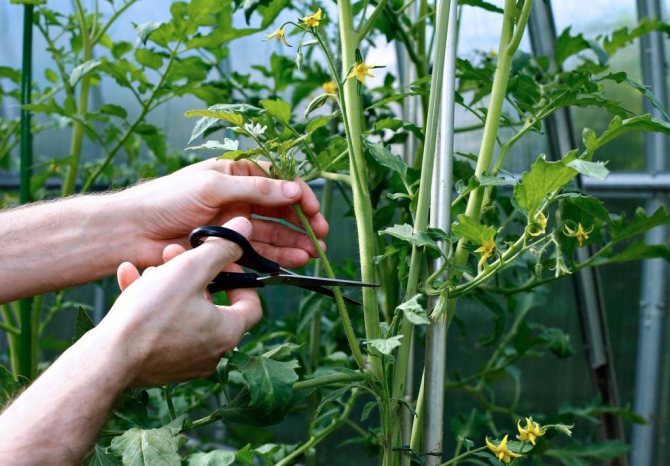

Tomato bushes of the Red Truffle variety throw out a fruit cluster every two leaves, which until the end of summer allows the plant to tie on each stem from 8 to 12 clusters with tomatoes. When formed into three stems, up to 10 kg of tomatoes can be harvested from the plant.
Garter
Tall tomatoes during the growing season must be tied to a support. The garter is made so that the branches of the plant are well lit by the sun and ventilated.
For tying tall tomatoes, you can use:
- Metal or wood common trellis, which are placed along a row of tomatoes from one end of the bed to the other.
- Tall wooden or metal pegs that are placed near each plant.
- In greenhouses, tall tomatoes are tied to strings hanging from a transverse fixture under the roof.
Read more about the peculiarities of the formation of tomatoes in the greenhouse, as well as about the methods of garter tomatoes.
They begin to tie up the bushes as soon as their height reaches 80–100 cm, and continue this work until the end of the growing season at intervals of 10 days. As a garter material, synthetic cords, twine or soft knitted fabric cut into strips (old T-shirts) are used.
Loosening the soil and weeding
Weeding or loosening is carried out so that the soil between the rows and in the root zone of the plants is kept clean of weeds and has a crumbly structure. Weeding is carried out every 8-10 days, as needed. In early summer, weeding is carried out more often, since weed seeds germinate quickly at this time. Since the second half of summer, the need for weeding the soil decreases, just one for 2-3 weeks.
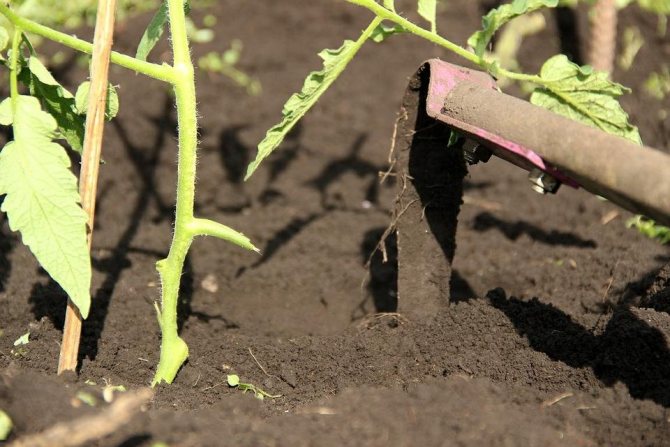

When the bushes reach a height of 70–80 cm, weeding is combined with hilling the plants. Hilling involves adding an additional layer of soil to the root zone of the plant, the height of the earthen hills at the same time reaches from 20 to 30 cm. The soil for hilling is raked with a hoe from the row spacing.
Loosening must be carried out after the past heavy rains (showers), during which the earth is strongly compacted, which interferes with the flow of oxygen to the root system of plants. For weeding or loosening, you can use a regular garden hoe with a suitable blade or a Fokin flat cutter (medium or large).
Did you know? The weight and size of tomatoes ranges from tiny cherry-sized cherry tomatoes to 2 kg fleshy giants.
Diseases and pests
Despite the good resistance to the main diseases of tomatoes, The red truffle can still undergo the following diseases:
- late blight;
- bacteriosis;
- top rot.
The fight against these diseases consists in preventive treatments of plantings with fungicides ("Quadris", "Oxyhom", "Fundazol", Bordeaux mixture). Prophylactic treatment should be started 2 weeks after planting the plants in a permanent place and repeated three times at intervals of 2 weeks between procedures. It is advisable to alternate systemic and contact fungicides in order to avoid plant habituation to active ingredients.
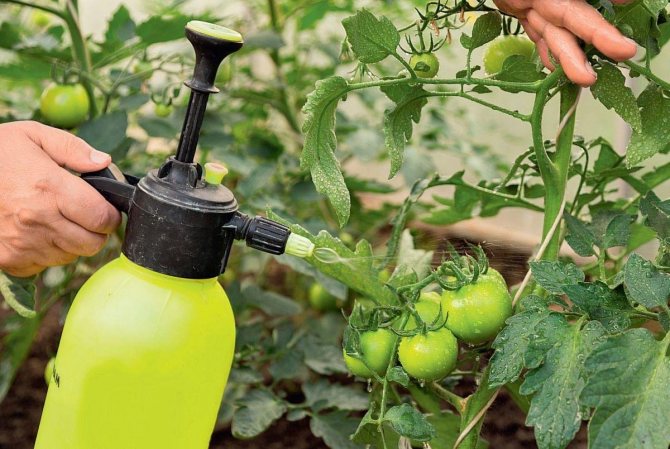

The treatment with fungicides can be combined with the treatment of plants against harmful insects, the instructions for the preparations state that insecticides can be added to the solution.Dangerous insects for tomatoes: Colorado potato beetle, aphids, scoops, spider mites (in a greenhouse). Pests can be dealt with with the help of chemicals (Fitoverm, Vertimek, Aktara, Aktellik) and herbal infusions (tobacco, nettle, wormwood).
The prevention of the occurrence of fungal diseases in a tomato garden also includes:
- not thickened fit;
- enhanced pinching;
- garter of plants;
- in the early stages of cultivation - trimming the leaves in contact with the soil, from August 1 - trimming all leaves on the plant (for airing) and pinching the growing point;
- timely harvesting of ripe tomatoes;
- treatment with chemical or natural preparations for diseases and insects.
Did you know? In cooking, tomatoes are used in different forms: they are boiled, baked, fried, marinades, sauces and juices are prepared.
Harvesting and storage
Tomatoes are recommended to be removed from the bush as soon as they acquire the characteristic color of the variety. Tomatoes have the ability to sing when removed from the mother plant. The collected fruits are placed in cardboard boxes in two layers. The container with the harvest is placed in a cool, well-ventilated room with an air temperature not higher than + 18 ... + 20 ° С. By following the growing recommendations given in this article, any budding gardener can grow a good harvest of tall Truffle Red tomatoes.

